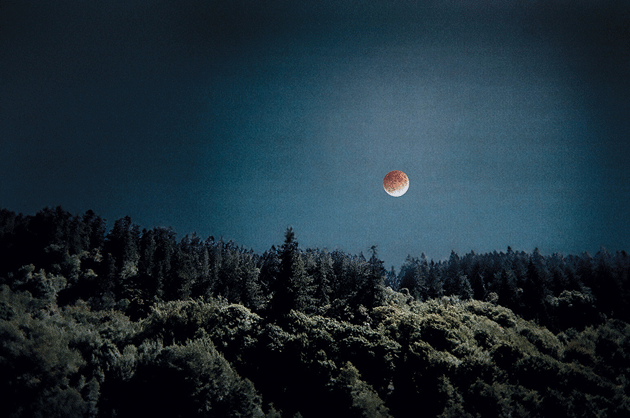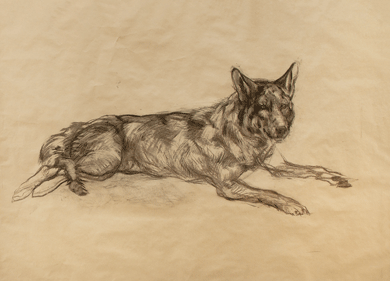It doesn’t matter that Ursula K. Le Guin has been winning awards for writing about aliens, wizards, and imaginary worlds since the 1960s — the label “science fiction” gives her the willies. “It is different from other kinds of writing, I suppose,” she said to The Paris Review in 2013,
so it deserves a name of its own. But where I can get prickly and combative is if I’m just called a sci-fi writer. I’m not. I’m a novelist and poet. Don’t shove me into your damn pigeonhole, where I don’t fit, because I’m all over. My tentacles are coming out of the pigeonhole in all directions.
For someone who hates the pigeonhole, Le Guin can be awfully defensive of it. Last year her tentacles got a workout in another round of the so-called genre wars, when she harangued Kazuo Ishiguro for worrying that his book The Buried Giant, which features a cast of knights and pixies, would be stereotyped as “fantasy” — a case of the pot calling the kettle black if ever there was one. It’s not as though Le Guin has been denied literary recognition. Thirty years ago, no less a snob than Harold Bloom wrote that her novel The Left Hand of Darkness “raised fantasy into high literature”; more recently, in this column, Zadie Smith praised Le Guin’s “majesty” and enthused that she “writes as well as any non-‘genre’ writer alive.”

“On Myth and Magic No. 5: Eclipse, 2009,” by Wendy Given. Courtesy the artist and Whitespace Gallery, Atlanta
After suffering through THE COMPLETE ORSINIA (Library of America, $35), it is my duty to report that Le Guin also writes as badly as any non-“genre” writer alive. Clunky exposition, extravagant figures of speech, leaden characters, wooden dialogue, false profundities, ponderous narration — these roost merrily in any nest. The first of what the Library of America promises will be a multivolume Le Guin edition, The Complete Orsinia contains early works of literary fiction set in a made-up Central European country. The novel Malafrena chronicles a political uprising in the late 1820s, and Orsinian Tales, a collection of short stories, extends the narrative into the twentieth century with slice-of-life accounts of love, war, labor, music, and state oppression. Let no one accuse the author of having a sense of humor. “They say one gets used to being a millionaire,” Le Guin intones in one story, “so after a year or two a human being begins to get used to being a woman. Rosana was learning to wear the rich and heavy garment of her inheritance.” Or this: “ ‘The idea of celibacy terrifies me,’ she replied, and he wanted to stretch out on the ground flecked with elm leaves like thin oval coins of gold, and die.” Me, too.
Malafrena was the first novel Le Guin drafted. She rewrote it several times before it was finally published, in 1979, and it has been mostly out of print since. I can only hazard that a sentimental attachment to the writing of her youth, as well as her desire to prove that she is “a novelist,” motivated her part in the publication of this book. It is harder to fathom the Library of America’s excuse. The press was founded to select and keep in print American writers of significance, classic works, and neglected masterpieces. The only other currently living novelist in the LOA canon is Philip Roth, who was treated to a complete edition. Perhaps Le Guin will be, too — that’s what comes of having leverage. Still, there are very few writers whose every word merits preservation, and in any case, the editors do readers no favors by leading off the series with what must be her worst work.
Scholars or superfans will take due interest in Le Guin’s early treatment of themes she would return to throughout her career — freedom, power, desire, and the confinement of gender. But literature is not a matter of treatises. Orsinia is a bland no-place, especially when compared with the lively and seductive worlds that she built in the Earthsea series, or even the dry but ethnographically rigorous Left Hand of Darkness. How I longed for a wizard or two to burst through the sagging pseudo-Lawrentian prose! By the time the revolutionaries of Malafrena failed, I had long stopped caring whether they ever tried again.
Then along came THE REVOLUTIONARIES TRY AGAIN (Coffee House Press, $16.95), a high-octane, high-modernist debut novel from the gifted, fleet Mauro Javier Cardenas. The plot follows three alumni of a Jesuit school in Guayaquil, Ecuador: Antonio, who leaves the country for San Francisco; Leopoldo, who remains, and takes a job with the pro-austerity government; and Rolando, who makes a local radio show that tries to rouse the people to action. Ten years after graduation, Leopoldo persuades Antonio to return home to help one of their friends run for office, but the campaign never gets off the ground. No matter. The Revolutionaries Try Again is one of those books in which what happens is less important than how it happens: in streams of consciousness laced with bilingual profanity, and pages of braggadocious dialogue unsoiled by a single quotation mark. The tone slides from crude juvenile humor to righteous outrage to resignation to the despair of losing one’s faith:
And then one day it was over, one day like any other day that intensity, which had expanded inside of them as if making room for everything god wanted from them, went away, leaving behind so much empty space that even in dreams they couldn’t escape what later Father Lucio told them was called desolation, which was a test from god, he said, omitting that this test might never end, as in fact it hasn’t.
My first thought was that the linguistic chaos was meant to replicate the violence of the oligarchs; Antonio, who is writing a short story based on the time he saw his grandmother’s statue of the baby Jesus weep, has a different read on the form — he had hoped for “the possibility of deforming American English as revenge for Americans deforming Latin America with their interventionist policies.” But he abandons his linguistic experiment as “pointless and childish.” Fiction is simply no match for reality. The boys are hung up on a refrain from their youth — “How are we to be Christians in a world of destitution and injustice,” which, in Antonio’s narration, morphs into the equally anguished, “How are we to be humans in a world of destitution and injustice.” It would be easier to know how to be human if anyone could hold on to a single memory, but the details from their pasts pile up and are forgotten. Life has too many moments; a person is “encrusted” with them — and too many can’t be shared.
 The final chapter is narrated by Rolando’s sister, Alma, who left Ecuador and entered the United States illegally after she was falsely accused of theft by her employer. Her story is a nightmare disclosed in flashes of assault, hunger, cold, worse — “How can a human being do that to another human being to children,” is her refrain. (Another female character, Eva, is beaten on the street; the violence perpetrated against women further ironizes the neurotic indecision of the male would-be revolutionaries.) Alma’s ESL teacher, Antonio — they are unaware of the connection — has asked for volunteers for the Voices of Witness program. But Alma is afraid of having her words twisted and taken away, made to serve someone else’s ends — to provide catharsis or inspiration or a happy ending, or any kind of ending at all.
The final chapter is narrated by Rolando’s sister, Alma, who left Ecuador and entered the United States illegally after she was falsely accused of theft by her employer. Her story is a nightmare disclosed in flashes of assault, hunger, cold, worse — “How can a human being do that to another human being to children,” is her refrain. (Another female character, Eva, is beaten on the street; the violence perpetrated against women further ironizes the neurotic indecision of the male would-be revolutionaries.) Alma’s ESL teacher, Antonio — they are unaware of the connection — has asked for volunteers for the Voices of Witness program. But Alma is afraid of having her words twisted and taken away, made to serve someone else’s ends — to provide catharsis or inspiration or a happy ending, or any kind of ending at all.
Maybe you were right to not tell me anything Estela what’s the point of telling anybody anything profe / come listen to the remarkable story of Alma Alban Cienfuegos who pretends to endure in the end / The End / uff your story made us feel better thank you so much for pretending you’re okay for us have a good one Alma / here we are / please take care Alma.
“I find long sentences beautiful and natural,” said Cardenas when he interviewed the Hungarian writer László Krasznahorkai at City Lights Books in 2012. Krasznahorkai felt the same way:
When you want to convince somebody about something, if you speak in a way, in that way, you use only long sentences, almost always just one sentence, because you didn’t need this dot, this is not natural if you speak in this way, if I want to convince you about something, that the world is such and such, then it’s a natural process for the sentences to become always longer and longer because I needed less and less the dot, this artificial border between sentences, because I didn’t use, I don’t use, now, for example, I don’t use dots, I use only pauses, and these are commas . . .
Krasznahorkai appreciates the naturalness of long sentences. But it is not verisimilitude that gives The Last Wolf, his one-sentence howl of a monologue, its power; that comes from the deranged mind of its narrator. Both the novellas in THE LAST WOLF and HERMAN (New Directions, $15.95), translated respectively by George Szirtes and John Batki, have an eerie, looking-glass quality. They are also very short — excellent gateway drugs to Krasznahorkai’s work. In The Revolutionaries Try Again, the characters are disturbed by their inability to say what happened; in The Last Wolf and Herman, it is what is known to have happened that disturbs.
The narrator of The Last Wolf used to be an academic and a well-known writer, but has “given up the idea of thought” and spends his days sipping beer in a Berlin bar. Out of nowhere he receives an invitation from an unnamed foundation to write about Extremadura, Spain, an “enormous, mercilessly barren, flat place.” This invitation is a cause of distress. The narrator has difficulty believing that it is really for him, or that he is still the person to whom it was addressed, but he accepts nonetheless: when the phone rings, you pick up.
From a game warden named José Miguel, the narrator discovers that there were really nine last wolves. Seven were hunted down — “murdered,” he says — and the eighth, pregnant and too heavy to run across the road, was hit by a car. The last, thought to have escaped to Portugal, was eventually found near a pond and shot. He also learns that the traps that were laid for the last two wolves had been tampered with — loosened so that the nooses would not tighten. Before he departs, José Miguel wants to confess something to the narrator, but “it was precisely what I expected . . . so I told him not to tell me.” We never learn what he would have said. What is most disquieting and, in a way, most melancholy, is that the wolf is not a symbol for anything. (“I hate symbolism,” Krasznahorkai said to Cardenas.) The wolf is simply itself, as the characters are themselves, helplessly caught in a series of events that they are doomed to live out.
 Is it José Miguel’s lost confession that is displaced and rewritten in Herman? In the first section, “The Game Warden,” Herman, a master trapper who considers himself “the last of the Mohicans,” is charged with clearing the overgrown Remete woods of predators — “mostly stray dogs and feral cats, as well as a few badgers and foxes.” His work proceeds admirably, though at the end of the second year he becomes haunted by images of the pit where he flings the carcasses, seeing in his dreams “the enormous putrescent hairy mass of dead meat quivering like jelly.” He orders more steel-jawed traps, one and a half times the standard size, and begins to set them for a new prey — humans. In “The Death of a Craft,” military officers on an extended leave of orgies and fun wind up joining the night patrols that search for Herman. But while in “The Game Warden” Herman dies in a hail of bullets, in “The Death of a Craft” he escapes the search party and is never heard from again. Nothing quite lines up. Each of these brilliant narratives is a piece of a puzzle that has either no solution or too many. As the very best fiction always does, they bring another world — an alien world, let’s say — into our own.
Is it José Miguel’s lost confession that is displaced and rewritten in Herman? In the first section, “The Game Warden,” Herman, a master trapper who considers himself “the last of the Mohicans,” is charged with clearing the overgrown Remete woods of predators — “mostly stray dogs and feral cats, as well as a few badgers and foxes.” His work proceeds admirably, though at the end of the second year he becomes haunted by images of the pit where he flings the carcasses, seeing in his dreams “the enormous putrescent hairy mass of dead meat quivering like jelly.” He orders more steel-jawed traps, one and a half times the standard size, and begins to set them for a new prey — humans. In “The Death of a Craft,” military officers on an extended leave of orgies and fun wind up joining the night patrols that search for Herman. But while in “The Game Warden” Herman dies in a hail of bullets, in “The Death of a Craft” he escapes the search party and is never heard from again. Nothing quite lines up. Each of these brilliant narratives is a piece of a puzzle that has either no solution or too many. As the very best fiction always does, they bring another world — an alien world, let’s say — into our own.






































































































